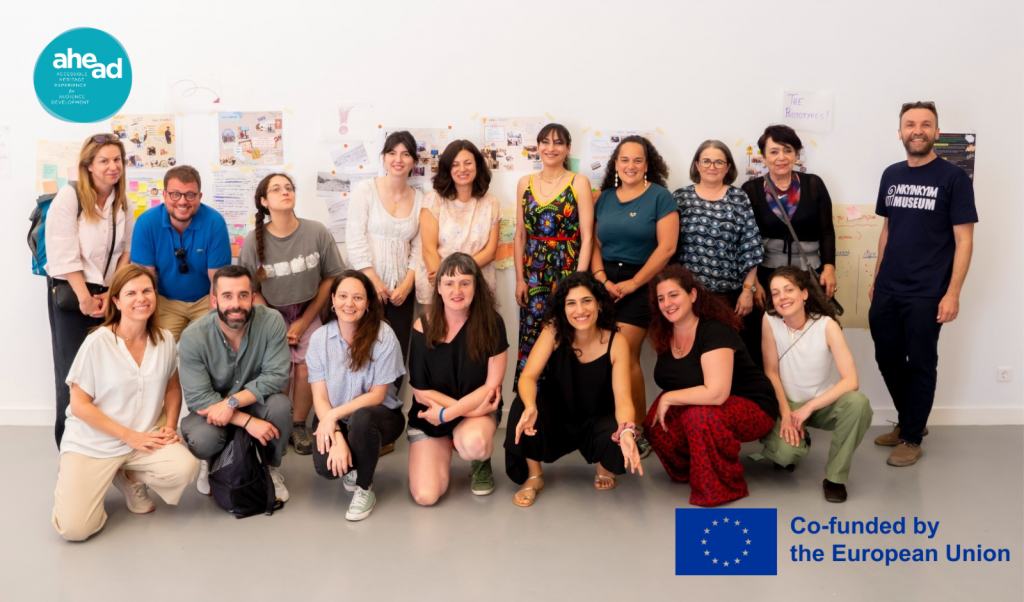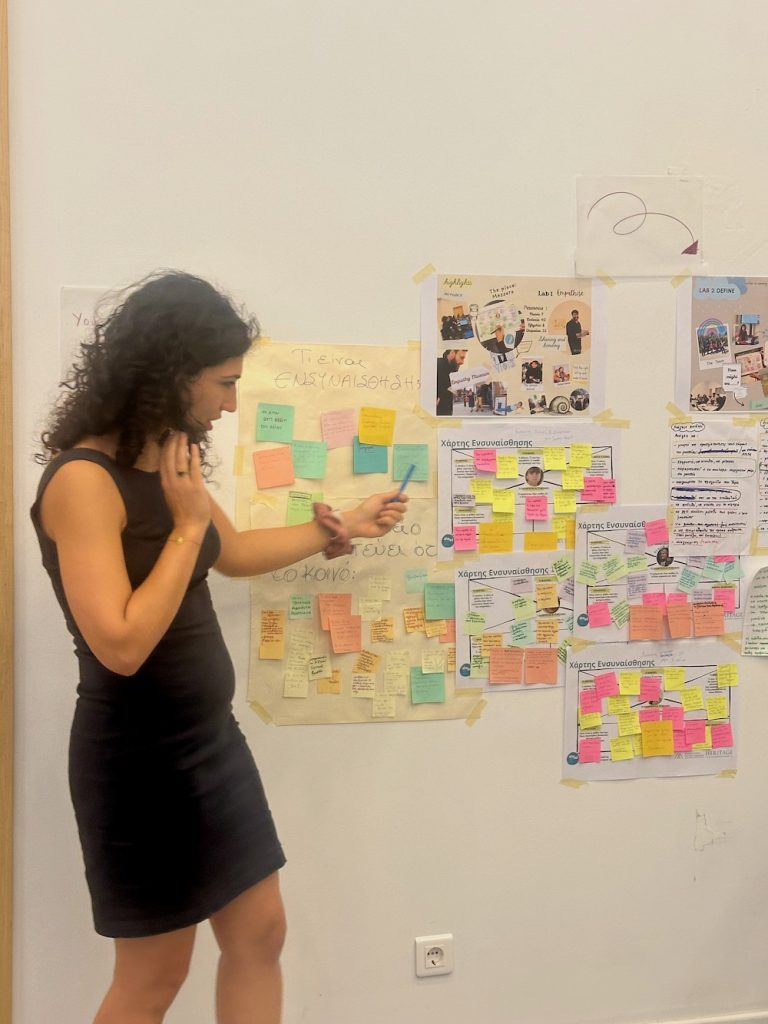: Field Trips
From Memory to Momentum: AHEAD Study Visit in Crete
From May 21st to 23rd, 2025, HERITΛGE and the Archaeological Museum of Mesara welcomed partners from across Europe for the second international AHEAD project Study Visit, a key milestone in the project’s mission to foster innovative, audience-centred cultural experiences. The three-day gathering hosted by the Museum (the project’s Greek Hub), proved a dynamic space for reflection, testing, and exchange of ideas across borders and communities.
The AHEAD team along with local heritage professionals and Elektra Angelopoulou – the artist selected to co-create work for the Greek hub- worked to validate and give feedback on the prototypes developed through the AHEAD methodology — a process designed to help cultural institutions understand their audiences, co-create with them, and embed those practices into their operations.
Two Prototypes, Two Publics
The Greek Hub focused on two distinct but equally vital local audiences: children and adults, engaging each group in a meaningful journey through AHEAD’s empathise–define–ideate–prototype–test framework.
Prototype I: Children’s Voices in the Museum
HERITΛGE and the Museum partnered with two local primary schools to involve young learners in the creative process. With the participation of artist/performer Elektra Angelopoulou, and through structured activities aligned with the AHEAD methodology, the children explored the museum’s collection and selected their favourite objects.From these choices, the children developed their own narratives — imaginative stories, reflections, and personal interpretations inspired by the artefacts.
In centering children’s voices, the museum embraces storytelling not just as education, but as connection — bridging past and present through creativity, wonder, and the eyes of a new generation.
Prototype II: Community, Connection, and Co-governance
In parallel, HERITΛGE invited local adults to participate in a series of reflective workshops, beginning with the sharing of memories, lived experiences, and deep-rooted connections to the Messara landscape — a place where archaeology, history, and daily life are inextricably linked.
These sessions revealed a strong sense of local pride, but also a disconnect: many felt the museum, though geographically close, was distant in spirit — shaped by state institutions without enough input from those who live nearby. In response, the prototype developed with this audience is the creation of a “Friends of the Museum of Mesara” Association.
This initiative aims to:
– Strengthen community engagement with the museum
– Amplify local voices in decision-making processes
– Support the museum’s role in driving tourism and sustainable local growth
– Provide a formal channel for co-creating future experiences and exhibitions
From Testing to Transformation
Both prototypes were presented to AHEAD consortium members during the Study Visit. Feedback sessions, held at the Archaeological Museum and visits to the area and its archaeological sites Gortyna and Phaistos, allowed partners to gain and exchange insights, and consider how these approaches might be adapted across other contexts.
The feedback underscored the importance of:
- Deep listening and long-term community involvement
- Rethinking traditional exchanges between museums and local communities
- Fostering sustainable links between heritage, education, and local development
- Working with the AHEAD methodology and returning to it as often as necessary throughout the lifetime of a project.
The prototypes — still in development — will be officially launched in September 2025, during a dedicated event that will also feature a site-specific performance by Elektra Angelopoulou, created in collaboration with the Mesara community.
Looking Ahead
This second Study Visit demonstrated the power of co-creation, memory, and local agency in shaping meaningful cultural heritage experiences. By validating the Greek Hub’s work and drawing lessons from the field, partners left Messara not only inspired, but equipped with ideas they could bring back to their own communities.
Next up for AHEAD: Study Visit 3 in Altamira, Spain — where a new chapter of audience-centred innovation is already unfolding.
AHEAD is co-funded by the European Union. To learn more about the AHEAD methodology or how to join the AHEAD network visit the project website and explore the learning resources, manifesto, and upcoming events.
The Refugee Identity Crisis: How Athens Builds National Identity through Heritage
As soon as you visit Athens it hits you square in the face, the strong nationalistic Greek identity is everywhere, sold in shops, on the shirts of the tourists and physically overlooking the city in the shape of the Acropolis. The visitor may not feel overpowered as they hop back on a plane home, but that is not the same for every resident of Athens.
Since the refugee crisis, tens of thousands have entered Greece and found themselves stuck and lost. Their homes destroyed, separated from family, and their national identity a distant past. Since their arrival, Athens has worked on satisfying necessities like health and shelter, and is now working on higher needs such as psycho-socio support. With this comes the chance to reform lost identity, forming a sense of belonging in Athens. To achieve this Athens is using their best product: heritage.
Refugees have been the focus of several temporary exhibits at the Benaki and Cycladic museum which focus on the travel and everyday aspect of their experience. This includes children’s drawings and sculptures by Chinese artist Ai Weiwei, who manifested the act of Europe letting go of its responsibilities to the refugees into an anthropomorphic statue.

Ai Weiwei exhibit photo credits: Kimberley Bulgin
Tours of the Acropolis, the Acropolis Museum and the National Archaeological Museum were started by the Greek cultural minister. Rather than focusing on the loss of the refugees, or the greatness of Athens’ past, he spoke of the Greek hospitality, of the similarities between their cultures and of the Parthenon and the lost Palmyra. He sent the strong message that their heritage may be lost but now the heritage of Athens is partly theirs.
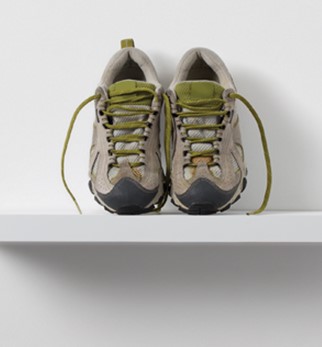
shoes donated to refugees displaying an act of kindness via: [http://www.museumwithoutahome.gr]
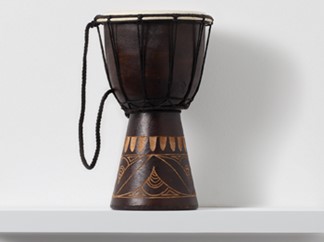
Touberleki traditional drum used to bring communities closer via: [http://www.museumwithoutahome.gr]
In time, hopefully a transcultural identity can be created by both Athens and the refugee communities. This will need to be based on a sharing of heritage spaces and representation for both communities, working on similarities rather than differences. Athenians can feel pride for their role in the refugee crisis and in the future, this can become part of their joined identity, an experience shared and represented in heritage spaces.

Kimberley Bulgin previously studied Classical and Archaeological studies at the University of Kent and her interests in Heritage Management are on visitor engagement in educational settings.
(This was an excerpt from her paper ‘The Refugee Identity Crisis: How Athens is bridging the gap between a person and their homeland through heritage and meaning making’ presented at the University of Kent MA conference on Boundaries in Paris in May 2017.)
A Day at the First Cemetery in Athens
It was a dark and gloomy day.
The clouds were hovering over Athens.
What a perfect day to go to the Cemetery.
Wouldn’t you say?
As part of our Education & Archaeology field trip led by Dr. Corbishley, we had the option to visit the First Cemetery of Athens.
Along with the University of Kent Archaeological Society (UKAS) students, who were visiting Athens, we created a tour around the city and made our way to the Cemetery. Here we saw Schliemann’s tomb which was rather grand amongst other grand tombs. (more…)
Celebrating International Women's Day as a HERMA student
Today is the 8th of March. It is the day that societies celebrate their women; it was basically made for the working women, ignoring that the women whom be called “housewives” are doing great unpaid jobs. Women in numbers are half of the population in most societies, and are responsible to take care of the other half in most communities. Women have great power and are present in economy, politics and social life. In my country, there were many role models of women who were leaders in their fields, and I wish to join that list one day.
(more…)
Eleusinian Mysteries
In this post, I would like to share a part of our class experience since my friends and I are doing our postgraduate degree near such important and interesting heritage sites which still have a cultural and historical value for the local people, not only archaeologists and heritage managers.
Elefsina (Eleusis), where the current MA’s lectures are taking place, is famous to historians and archaeologists for its sanctuary to Demeter and its associated cult which is one of the most famous religious observances in Ancient Greece. The details of the cult are still unknown due to its high secrecy. It had been practiced for over 2100 years from 1700 BC and the 20 kilometer pilgrimage route starting from the center of Athens to Elefsina was trekked by foot. This practice continued through generation to generation, but was abandoned after a prohibition order of pagan activities by the Christian Roman Emperor Theodosius I in the fourth century A.D.
However the road taken by those palmers, called this the Sacred Way (Iera Odos), can still be observed today in its tangible form and intangible values. Figure 1 shows an estimation of the way by archaeologists and historians.
The whole journey starts from, the Eleusinian at the Acropolis (pink point), and pass a gate of Athenian walls at Kerameikos (yellow point). Then it follows along the modern day highway still called “Iera Odos” which passes by the Sanctuary to Aphrodite (blue point). Finally it arrives in Elefsina (green point), where the religious cult activity was talking place.
The students participated in a field trip that traced the ruins of the Sacred Way, visiting Aphrodite’s Sanctuary as well as stretches of the stone path that created the Way which have been uncovered.
Eleusinian near the Acropolis
The Eleusinian was used as storage for all the sacred objects of the Eleusinian Mysteries during its ceremonies, which is located near the Acropolis in Athens. The participants started their pilgrimage journey from here.

Fig2: A part of the Acropolis. Photo Credit: Yoshitaka Sasaki
Kerameikos
The name, Kerameikos, came from the word “pottery”, in Greek since potters and their painters used to settle around this area (Ministry of Culture and Sports in Greece, 2012). As Figure 3 shows, it is currently an archaeological site, and a gate of the Athenian wall was located here as a Figure 4 shows due to the protection of the city in ancient times. It was also place to bury the soldiers killed by battles (Ancient Athens 3D).
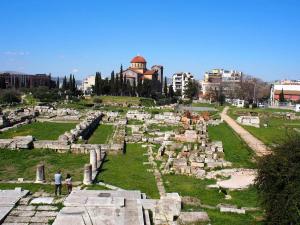
Fig3. Kerameikos. Photo Credit: Yoshitaka Sasaki

Fig4: 3D images of ancient Kerameikos. Photo Credit: Ancient Athens 3D
The road is divided into two ways; the Iera Odos being to the right. The road is still actively used and is one of the main roads to go Elefsina from Athens today.

Fig5: A crossroad. Photo Credit: Yoshitaka Sasaki
Aphrodite’s Sanctuary
According to one of our professor’s, the sanctuary, located at the middle point between Athens and Elefsina, is dedicated to Aphrodite, the goddess of love, beauty and fertility. Those rock cut niches in Figure 7, were created by pilgrims and initiates to the cult to house votive offerings to help solve problems in their personal lives in relation to characteristics of Aphrodite. It is currently surrounded by fences, but is still religiously popular among the locals as a Figure 8 suggests. This offering was there when our class arrived at the site, making it highly possible that this offering was made within few days of our visit. In this sense, the Sanctuary has both tangible and intangible value for the locals.

Fig6: The cave and its fence. Photo Credit: Yoshitaka Sasaki
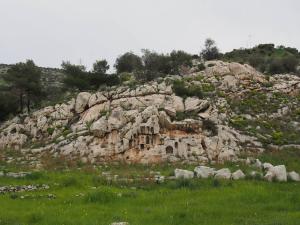
Fig7: Rock cut niches for votives to Aphrodite. Photo Credit: Yoshitaka Sasaki

Fig8: An offering. Photo Credit: Yoshitaka Sasaki
Remains of the Way
Near the Sanctuary, there are remains of the Sacred Way in Figures 9 and 10. The stones of the passage are originals, so the passage has enormous level of authenticity. However, there are no informational signs or explanations to show this important site, and unfortunately a water park for children was built in front of this passage ruining the site’s authenticity. It is almost impossible to distinguish those stones in front of the amusement park which have existed there from ancient times. This type of controversial problem is also a case of concern by the field of Heritage Management.

Fig 9: The Sacred Way runs along a modern water park. Photo Credit: Yoshitaka Sasaki

Fig10: Remains of the Sacred Way. Photo Credit: Yoshitaka Sasaki
Elefsina (Eleusis)
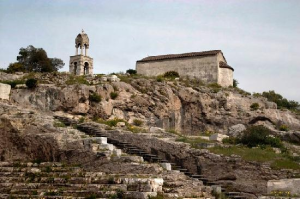
Fig11: Elefsina Archaeological site. Photo Credit: Trip Advisor
Then the 20km journey ends at another acropolis, currently known as the Archaeological Site of Elefsina. It is a site that is mythologically known as the city where Hades had taken Demeter’s daughter Persephone down to the underworld. The myth has it that when her daughter was taken, Demeter was so upset that she allowed all the crops in the world to die. A deal was made with Hades that Persephone would be allowed to come up to Earth to be with her mother for 6 months out of the year and spend the rest of the year with him in the underworld, and this is why we have the seasons. The essence of the cult was to ensure that the harvest would happen year after year. Initiates of the cult would make their way through the site and up the hillside to the largest covered temple known as the Telesterion where the secret rituals of the cult were performed.
This Sacred Way is a great case study for heritage managers as the values of these sites do not enhance or provide their importance to the present population due to its poor or lack of management. We need to establish ways to overcome the issue effectively and efficiently, which is what my classmates and I are training to do.
References
- Ancient Athens 3D, (n.d.). Kerameikos, [Online]. Available from: http://www.ancientathens3d.com/kerameikosEn.htm [29 March 2014].
- GREECE.com, (n.d.). RHEITOI (LAKE KOUMOUNDOUROU) [Online]. Available from: http://www.greece.com/photos/destinations/Attica/Athens/Lake/Koumoundourou_Lake/Rheitoi_(Lake_Koumoundourou)/41562505 [29 March 2014].
- Official web-site of the city of Eleusina, History of Elefsina. Available from: <http://www.eleusina.gr/history/syntomo_istoriko.aspx?sflang=en>.[18 March 2014].
- Ministry of Culture and Sports in Greece. (2012), Kerameikos. [Online]. Available from: http://odysseus.culture.gr/h/3/eh351.jsp?obj_id=2392 [29 March 2014].
- Elefsina Archaeological site (n.d) Tripadvisor [Online] At http://media-cdn.tripadvisor.com/media/photo-s/01/56/71/a6/archaeological-site-elefsina.jpg
Yoshitaka Sasaki is a postgraduate student in the MA in Heritage Management 2013-2014. He mainly took business administration studies with philosophy and social science courses within a liberal art degree during his undergraduate. Yoshitaka’s main interest is to find ways of managing heritage sites by enhancing the values of sites in understandable forms to visitors and related stakeholders in the context of the tourism industry, aided by his study abroad experiences in Switzerland, Thailand and Greece.

